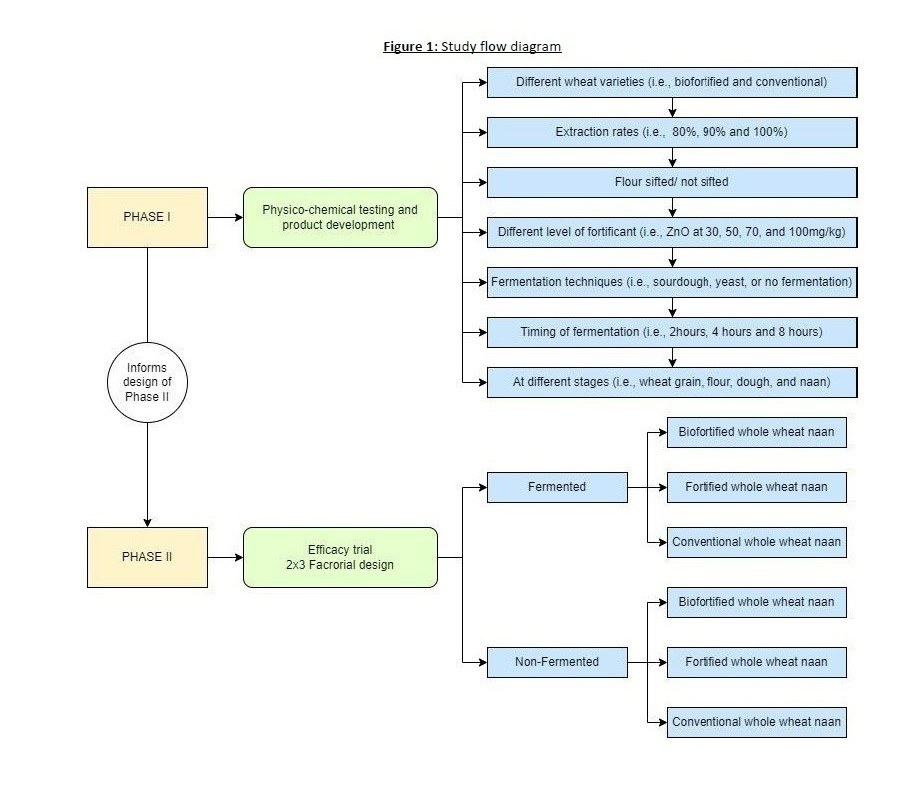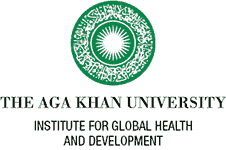Efficacy of Zinc Fortified Fermented Wheat (EZAFFAW): Product Development and Randomized Controlled Trial

Background
Malnutrition is a global issue as nearly quarter of the world’s population is suffering from one or more micronutrient malnutrition disorder. Globally, 22.2% children are stunted, 50.5 million are wasted, and 38.3 million under five children are overweight.
Malnutrition is persistently high in many developing regions of the world, and micronutrient deficiency is a serious health concern. A lack of folate, iron, and vitamins A and B12 primarily impacts the health of children and child-bearing women. Amongst vulnerable population, adolescent girls are a high-risk group for undernutrition. Their nutritional requirements are high because it is a period of rapid growth and development, and the onset of menses. However, little is known about their micronutrient status.
Zinc deficiency is one of the common micronutrient deficiencies and a major global health challenge. Approximately 17% of the global population does not get enough zinc in their diet. Pakistan has one of the highest rates of zinc deficiency in the world, affecting 20 – 40% of the population, with large provincial and regional disparities. It can lead to increased risk of illness and death during infancy and childhood, stunted physical and mental development, impaired immune function, and adverse pregnancy outcomes.
Zinc plays an important role in managing crucial body functions, and its deficiency may put one at serious risk of health conditions. For example, zinc plays an important role in insulin secretion and glucose homeostasis. There is growing evidence linking its deficiency with increased risk of cardiometabolic disorders, including severe Type 2 Diabetes Mellitus (T2DM).
In Pakistan and other developing countries, food fortification is considered a safe and cost-effective measure to prevent zinc and other micronutrient deficiencies. Biofortification of food crops, which refers to enhancing micronutrient content using plant breeding techniques, is a common type of fortification to increase provitamin A, zinc, iron, and folate contents in staple foods.
Biofortification aims to improve the micronutrient status of undernourished populations through the development of agricultural technologies, such as improved seeds and/or fertilizers, which can augment the micronutrient content of crops. It is an effective strategy to reach rural communities of the developing countries where consumption of staple foods is higher than other micronutrient-rich foods (animal source foods, fruits, and vegetables), and access to micronutrient supplements is limited.
Previous research has shown that consuming zinc-biofortified wheat can reduce illness in women and children and increase total zinc absorption by 30-70% in different age groups. In addition, a recent meta-analysis of 36 studies suggests that consumption of low doses of zinc, delivered by zinc biofortified foods or post-harvest fortified foods and beverages, may also help improve risk factors of chronic diseases.
Given the scale of agriculture sector in Pakistan where wheat with poor zinc content is widely used as a staple food, HarvestPlus developed biofortified wheat, Zincol-2016, that contains on average 37 mg zinc/kg wheat. Studies have highlighted a significant increase in daily dietary zinc uptake in population consuming Zincol-2016 flour, indicating a positive prospect of biofortification and lowering the risk of dietary Zinc deficiency in marginalized communities. Moreover, the zinc fertilizer has not only helped in enhancing Zinc concentration in the grain, but also helped in improving crop yield with high economic return. To complement Zincol-2016, a new wheat variety Akbar-2019 was released by the Ayub Agricultural Research Institute (AARI), Faisalabad which has accounted for 75% of the national output in Punjab. Recently, a third variety, Nawab-2021 was also introduced.
In summary, whole-wheat flour, which has been fortified industrially or via. plant breeding, is an ideal zinc-enriched source. It is also expected that the adoption and acceptability of biofortified wheat is high as zinc does not affect wheat's sensory characteristics. In addition, fermentation of the flour to make naan (flatbread) can increase the bioavailability of zinc. As such, using low-cost and culturally acceptable food processing techniques can improve zinc absorption from biofortified and fortified wheat significantly and sustainably.
Objectives
To analyse, develop, and evaluate the efficacy of ‘optimally fermented’ and ‘non-fermented’ zinc-fortified and zinc-biofortified wheat flour on zinc status in adolescents (10-19 years) and young-adult women (19-24 years) who are at risk of zinc deficiency.
Project Methodology

Project Team
This is a project by Institute for Global Health and Development (IGHD) in collaboration with
- The Institute of Food Science & Nutrition, Bahauddin Zakaria University, Multan, Pakistan
- Center of Global Child Health, SickKids, Toronto, Canada
- University of California, Davis, U.S.
- Forman Christian College University, Lahore, Pakistan
- National Agriculture Research Centre, Islamabad, Pakistan
- Pakistan Council of Scientific and Industrial Research (PCSIR), Pakistan.
It will be implemented through the generous funding from HarvestPlus.
Dr Zulfiqar A Bhutta, Distinguished University Professor and Founding Director, and Dr Jai K Das, Assistant Professor, Department of Paediatrics and Child Health and Assistant Director are the lead investigators from IGHD.


